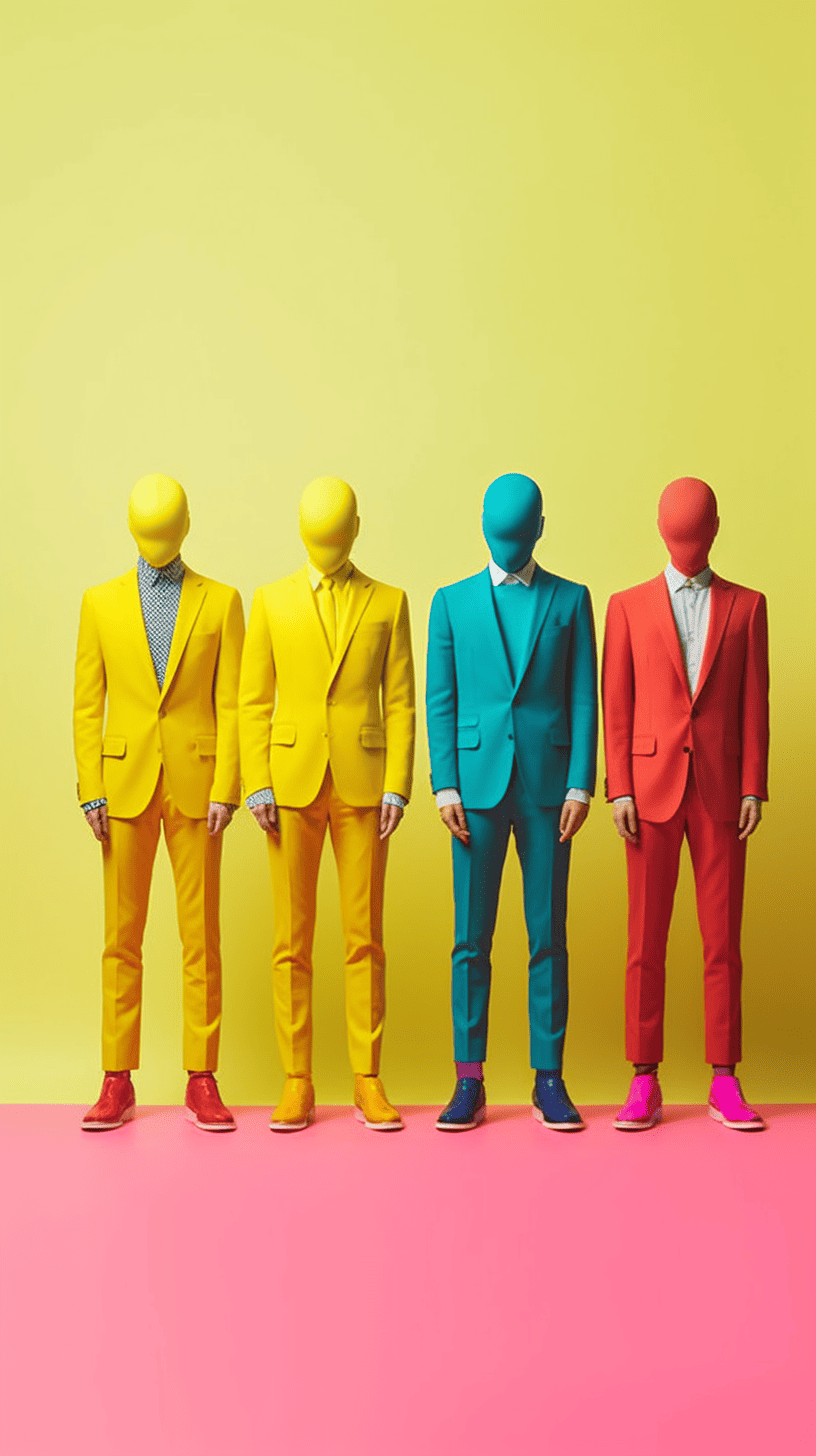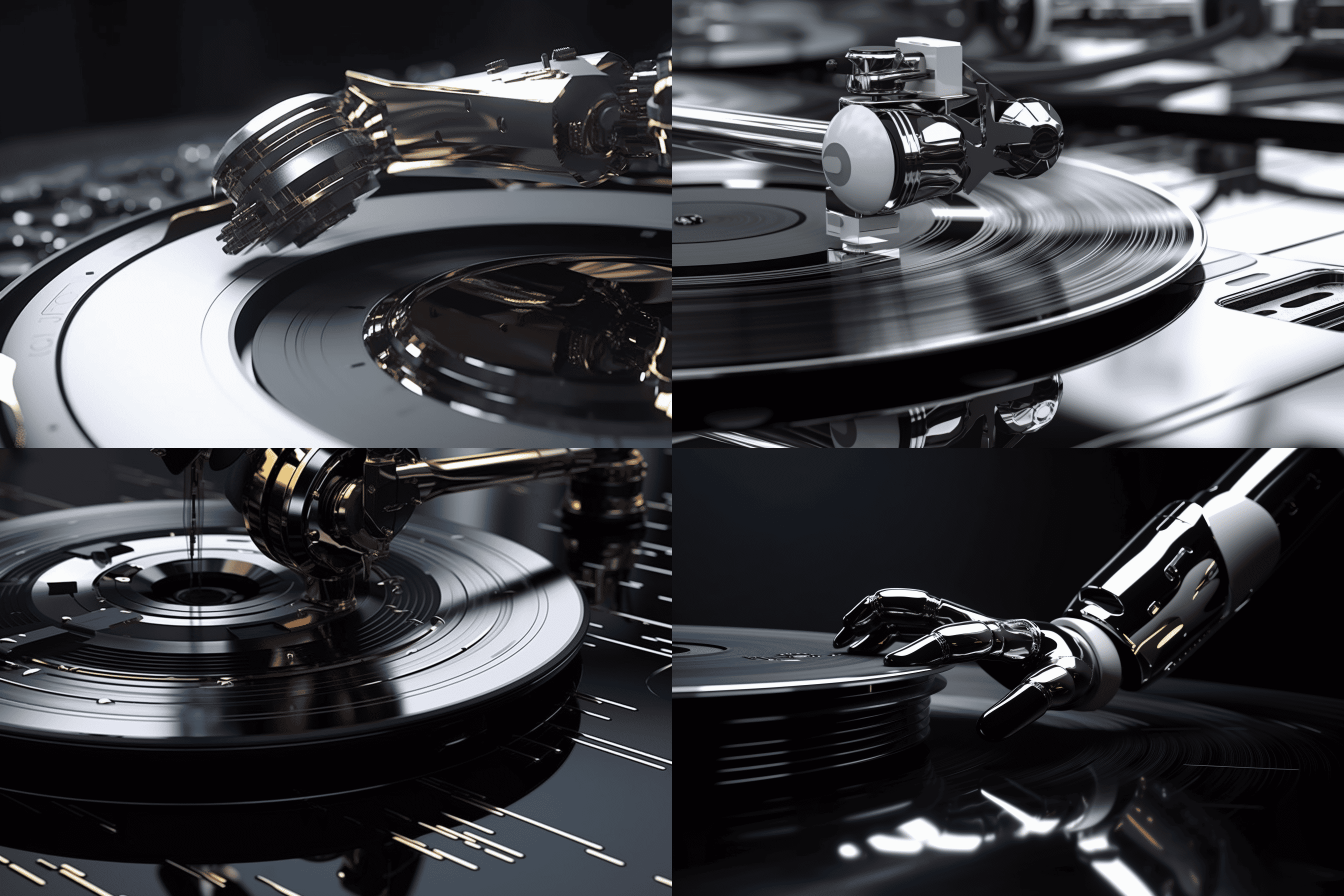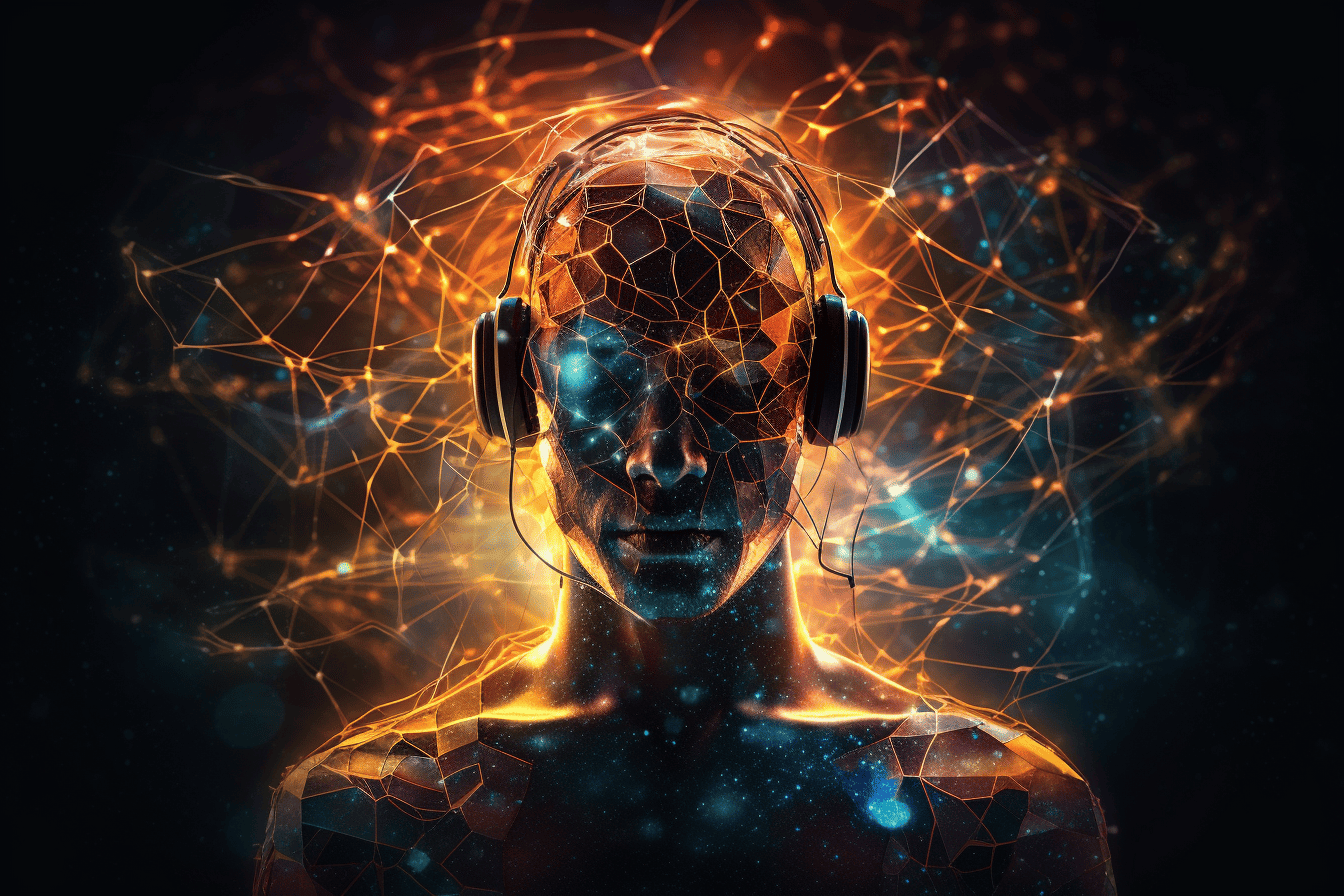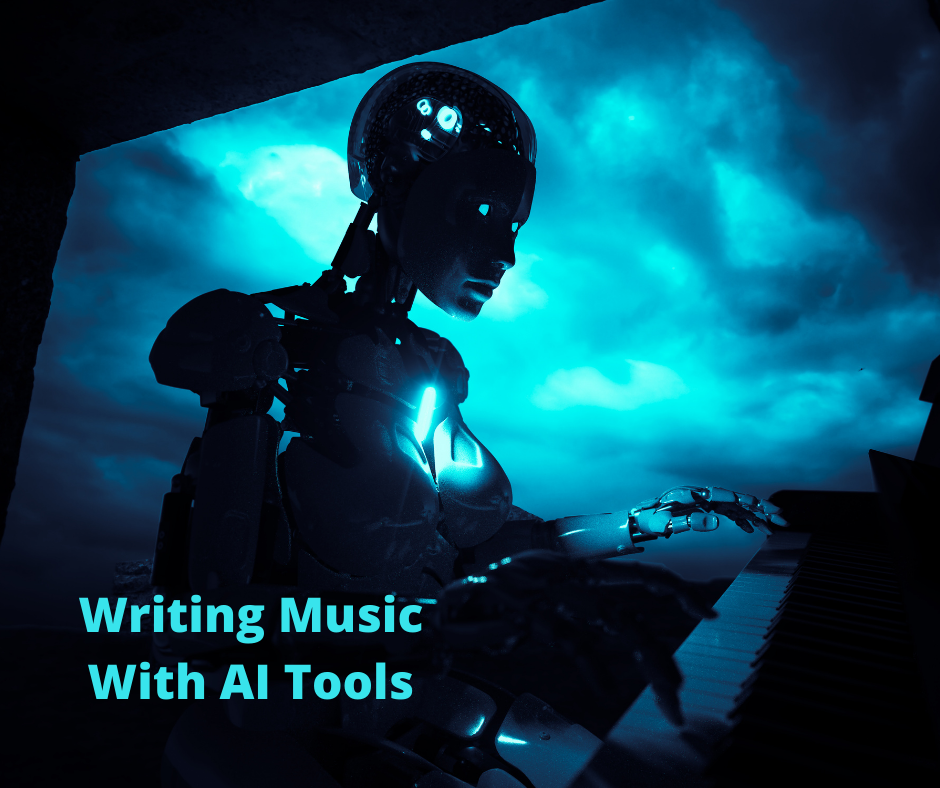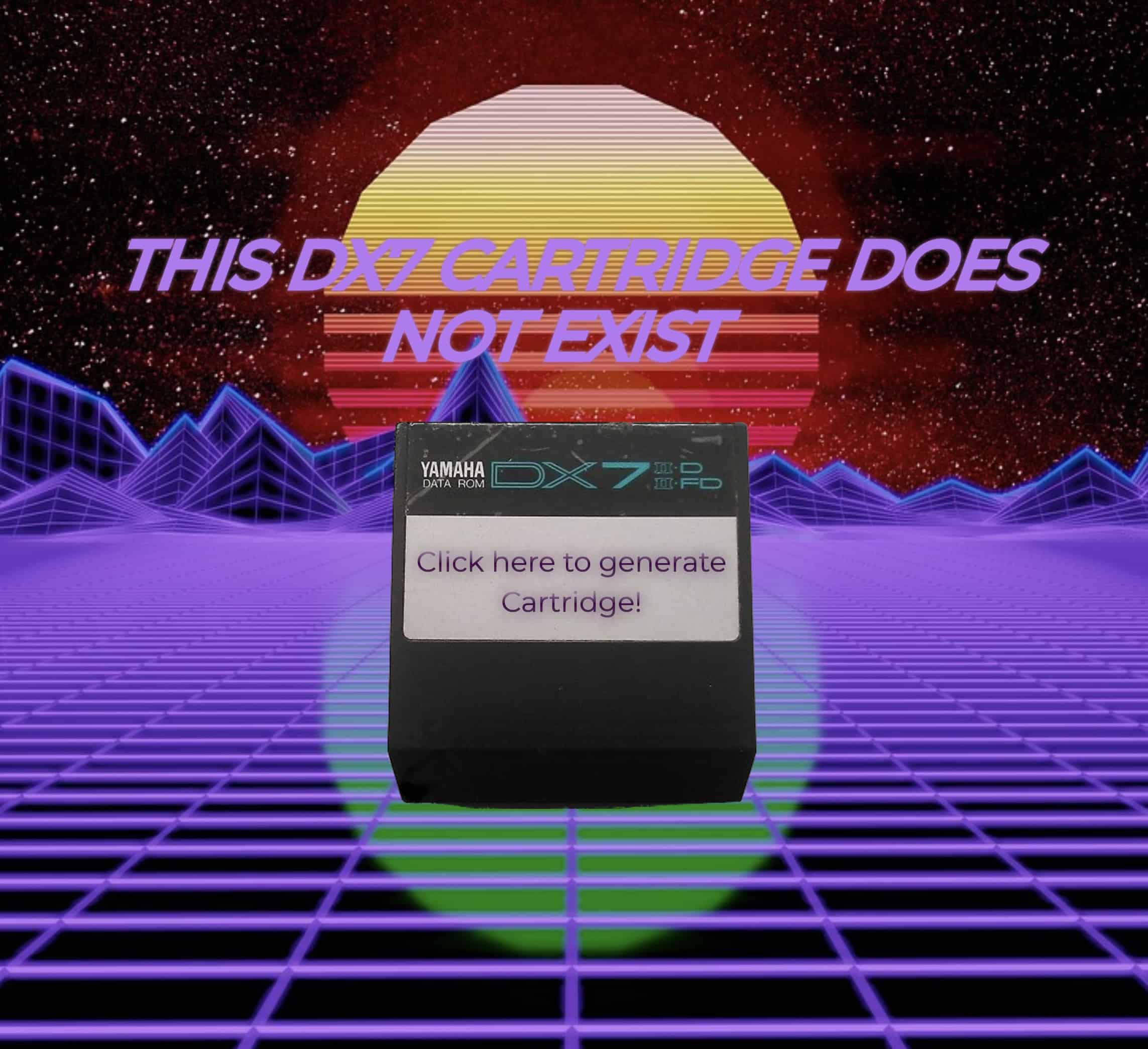In an age of increasing automation, the line between what is real and what is fake is becoming increasingly blurred.
From AI-generated music to virtual reality, technology has become a powerful tool for creating experiences that are indistinguishable from reality.
But how does the creation of AI-generated music affect our understanding of authenticity?
We may soon find ourselves in a world where human-created music and AI-generated music exist side by side, challenging us to differentiate between them.
As technology continues to rapidly evolve, it’s time to take a closer look at the implications of this blurring line between real and fake music.
Overview of AI-Generated Music
You may have heard of AI-generated music, but do you know what it is and why it’s becoming so popular?
AI-generated music is created using a combination of simulated instruments, machine learning algorithms, and artificial intelligence. It uses algorithms to generate original compositions that sound realistic to the human ear.
It has become increasingly popular in the past few years due to its ability to create unique sounds and bring an element of surprise into music production. This technology has allowed for greater experimentation with different genres and styles, creating something fresh for audiences who crave innovation.
By incorporating simulated instruments and machine learning into their creations, artists are able to explore new musical possibilities that were not possible before. The next step is differentiating between real and fake music created by AI.
Music generated by AI can often be indistinguishable from that written by humans – making it difficult to tell the difference between them both. However, there are certain characteristics that can help us distinguish between human-created songs versus those composed by AI programs.
These include tempo variations, use of unexpected chords or keys, lack of emotional depth in lyrics or melodies, and a tendency towards repetition or formulaic patterns in composition. With these clues in mind, we can begin to better understand how AI-generated music works – allowing us to appreciate its true potential when used creatively by humans in different scenarios.
Differentiating Between Real and Fake Music
When discussing the differences between real and fake music, it’s important to consider both aesthetic and technical considerations.
Aesthetically, human-created music typically has a more personal touch that AI-generated music may lack.
Technically, human musicians must think ahead in order to execute complex arrangements of notes, whereas computer-generated music can create seemingly infinite variations on any given idea.
Aesthetic and Technical Considerations
As technology progresses, it’s becoming increasingly difficult to distinguish between manually crafted and artificially generated sounds – a challenge which presents both technical and aesthetic considerations.
On one hand, the technical implications may include social implications of AI-generated music, such as how it impacts intellectual property rights or affects the livelihoods of musicians.
On the other hand, there are aesthetic considerations that need to be taken into account when comparing human-created music with computer-generated music. As AI-generated music is created using algorithms and machine learning models, does it still have the same emotional impact as a piece composed by a human? Can an algorithm match the depth and complexity of an artist’s creative vision? How do we ensure that human creativity remains valued in spite of advances in artificial intelligence?
These questions illustrate just some of considerations that must be taken into account when assessing real vs. fake music as technology continues to progress.
These complex questions touch on many different aspects related to real vs. fake music – from social implications to intellectual property – making this topic more nuanced than ever before. With each new advancement in AI comes an increased level of sophistication for both real and fake audio production techniques, blurring the line even further between what’s considered “real” and “fake” when it comes to musical composition.
The next section will explore how these advancements are impacting our understanding of human vs computer generated music.
Human vs. Computer Generated Music
With technology rapidly advancing, it’s become harder to determine which sounds have been crafted by humans and which are AI-made – a challenge with far reaching implications.
According to a recent survey, 45% of people believe that computer-generated music can be just as meaningful and emotive as human-composed music.
In terms of audience perception, this issue is particularly relevant; even if the musical composition is generated by an AI program, it still has the potential to evoke powerful emotions in listeners.
Moreover, issues such as copyright laws also come into play here; if something is created using AI algorithms but copyrighted under the name of its creator (human or otherwise), then who really owns the rights?
This debate over authenticity in music production has led to some interesting innovations in the industry.
For example, some musicians have begun incorporating both human and machine elements into their compositions in order to create more complex soundscapes.
This concept could also potentially be used for live performances as well – allowing performers to use artificial intelligence tools on stage while still maintaining a personal connection with their audience through improvisation and real-time interaction.
Ultimately, it’s clear that there are many questions yet to be answered about how humans and computers will coexist when it comes to music creation – and these questions will continue to shape the future of the industry for years to come.
Impact on the Music Industry
You’ve seen how AI-generated music and human-made tunes are merging, so what does this mean for the industry? As AI technology continues to evolve and become more accessible, it’s becoming increasingly intertwined with the music industry.
This has both cost benefits and ethical implications that must be taken into consideration. From a financial standpoint, there are many advantages to incorporating AI into the production process. For example, producers can save time and money by using AI-generated samples instead of paying for expensive studio recordings. Additionally, artists may be able to license their work more quickly and efficiently with automated tools.
However, it’s important to consider the potential effects on artist rights as well. If an artist creates a piece of music using an AI system, does he or she own the rights to that song? Additionally, will musicians who use AI technology be able to receive royalties from those songs? These are all questions that need to be addressed in order for music industry professionals to make informed decisions about how they use AI technology moving forward.
The answers will have a major impact on how future generations create and consume music. With these considerations in mind, let’s turn our attention next towards ethical considerations surrounding artificial intelligence generated music.
Ethical Considerations
Considering the potential effects of AI technology on the music industry, it’s essential to take into account its ethical implications in order for all involved to make informed decisions.
Music ownership and copyright issues are particularly important when dealing with AI-generated music, as this introduces a new layer of complexity and legal ramifications. For example, who holds the rights to the intellectual property of an AI-generated song?
Does a human composer have any claim to royalties if their work was used by an AI system as input material? Furthermore, who is responsible for any damages incurred from infringing upon existing copyrighted works?
These are just some of the ethical questions that must be addressed as we continue to explore new ways of creating music with artificial intelligence.
The use of AI technology in creating music also has implications for our understanding of creativity itself. If machines can create complex musical works indistinguishable from those created by humans, will there be any value placed on human creativity anymore?
Will our traditional notions about artistic expression still apply in a world where machine-generated art is becoming more prevalent? These are difficult questions without easy answers, and they require further exploration before we can fully understand the shift in creative production that may arise due to advances in artificial intelligence.
Future of AI-Generated Music
As AI-generated music continues to develop, you’re faced with the prospect of re-evaluating your preconceived notions about creativity and ownership in a world where machine-made art is becoming increasingly commonplace.
The future of AI-generated music has wide-ranging implications for many aspects of the industry, from musicality and copyright laws to how artists will be compensated for their work.
The application of artificial intelligence in creating music has the potential to revolutionize the industry. It could allow composers to create new sounds and textures that would otherwise be impossible with conventional instruments or software.
Additionally, it could open up opportunities for collaborations between human musicians and machines, allowing them to create unique pieces together. This could lead to an entirely new genre of music that blends elements from both worlds.
Furthermore, AI can also be used as a tool for songwriting as it can generate ideas quickly and accurately which would enable musicians to produce songs faster than ever before.
However, it’s important to consider how advancements in this field might affect existing copyright laws. Questions about who owns the rights to such works still remain largely unanswered; whether it is the composer or programmer behind the technology?
With these issues yet unresolved, we must look towards more progressive approaches when it comes to protecting musical works created by machines in order to ensure fair compensation for all involved parties within a rapidly changing landscape.
Frequently Asked Questions
How much does AI-generated music cost compared to human-created music?
As AI technology continues to advance and evolve, there is an ever-growing divide between the cost of human-created and AI-generated music.
In general, the cost of creating an original piece of AI music is much lower than that of a human artist – in some cases up to 90% cheaper. However, copyright issues can arise when using AI-generated music, as many popular algorithms are proprietary and may come with restrictions on usage or licensing fees.
In comparison, pricing for human-created music can vary greatly depending on the artist or composer involved.
Ultimately, it’s important to weigh both options carefully before investing in either type of music production.
Can AI-generated music be copyrighted?
As AI technology rapidly advances and the music industry evolves, copyright law is becoming increasingly complex.
One of the biggest questions now is if AI-generated music can be copyrighted. With many producers utilizing artificial intelligence to create entire albums of music, it creates a unique challenge for copyright law.
It’s difficult to determine who owns the rights to AI-generated songs – is it the artist who composed it with help from AI? Or should credit go to whoever created the algorithm?
This new dilemma has implications that could drastically alter how we view copyright law in the future as well as how we value innovation within the music industry.
How do you know if the music you are listening to is AI-generated or human-created?
Trying to distinguish between ai-generated and human-created music can be difficult, but it’s possible with the help of audio recognition and machine learning.
Audio recognition technology is able to analyze any piece of music and detect patterns that are unique to either ai-generated or human-created music.
Additionally, machine learning algorithms can be used to further analyze these patterns in order to accurately categorize any given piece of music.
With this process, you can quickly determine if the song you’re listening to was created by a computer or by a person, giving you an insight into the innovation behind the track.
Are there any limitations to what AI-generated music can achieve?
The potential of AI-generated music is both awe-inspiring and intimidating. While some argue that it can mimic the complexity and emotional depth of human-created music, others remain unconvinced that a machine could ever truly capture the nuances of our creativity.
All the same, AI-generated music is becoming increasingly sophisticated and raises ethical implications about its use in professional settings. The challenge for us now is to decide how to best utilize this technology without compromising artistic integrity or sacrificing the emotion inherent in our work.
Are there any legal implications for using AI-generated music?
As AI-generated music continues to rise in popularity, many ethical concerns have been raised about its use.
Not only is there a potential for copyright infringement with AI-generated music, but also the worry that it will eventually replace human-created music due to its increased musical quality and ease of production.
This has led to legal debates surrounding the use of AI-generated music and how much control should be given over it.
It’s clear that further research must be done in order to define both the ethical implications and legal implications associated with this technology.
Conclusion
As artificial intelligence continues to advance, the line between real and fake music is becoming increasingly blurred. The impact of AI-generated music on the industry is undeniable, from providing new creative opportunities to blurring ethical boundaries.
While we may never be able to fully understand the implications of this technology, one thing is for certain: it’s here to stay. We can only hope that as AI-generated music becomes more prevalent in our lives, so too will its ability to bring us joy and inspire creativity without sacrificing our sense of morality.
As with any form of technology, it’s up to us how we choose to use it – for better or worse.


